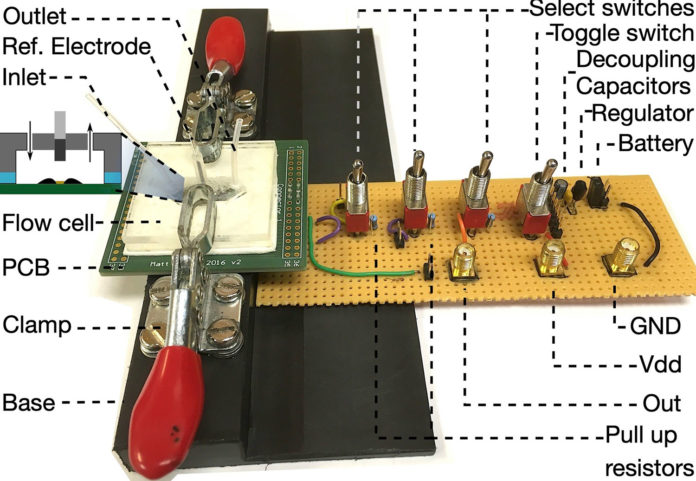Existing PCR test, which is considered gold-standard of COVID-19 testing, need to be sent to labs for further testing. But, this test takes a long time to give results. The speedy at-home alternatives, lateral flow tests, provide fast results but with lower accuracy.
The sensor called the ion-sensitive field-effect transistor (ISFET) acts as the best alternative to PCR tests. When integrated with electronics, it works as infectious disease tests.
The test works by detecting the change in pH (acidity) of liquids. It can be integrated on ‘lab-on-chip technology to process results on the chip itself very quickly.
The problem arises when the liquids come in contact, hence altering the sensing surface. It thus causes ‘drift’ – an uncontrollable, continuous, and slow change of the output signal without changes to the liquid’s acidity.
Now, Imperial scientists have improved the ISFET sensor by adding a graphene sheet. It reduces the drift by 50 percent. It also combats the sensor’s chemical instability at its origin – the sensing surface.
Along with further enhancements, this approach could allow a new generation of modified surface sensors for lab-on-chip applications like at-home disease testing.
The lead author of the corresponding paper Dr. Christoforos Panteli, from Imperial’s Department of Electrical and Electronic Engineering, said: “The need for reliable and fast lab-on-chip systems is very high. Our innovation means that surface-modified ISFETs could be a new, and possibly better, way for high-performance lab-on-chip chemical sensing systems against infectious diseases.”
During manufacturing, the process used to produce the ISFET’s electronic chip deposits material on the surface sensitive to the pH of the liquid being tested. This sensing top layer is modified while in contact with the liquid, causing the real-time chemical drift found on the sensor.
By modifying the surface, scientists found an effective way to improve the sensor’s performance without additional circuitry.
Scientists noted, “Their improvement method can be developed further to address all drawbacks of the sensor. The next step will be to improve the quality of transferring graphene onto the surface of the sensor. This will include talking with industry on the deposition methods that maintain low costs at large scales and developing these methods in the laboratory.”
Journal Reference:
- Christoforos Panteli et al. Reduced Drift of CMOS ISFET pH Sensors Using Graphene Sheets. DOI: 10.1109/JSEN.2021.3074748
